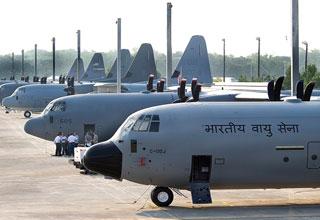
A file photo
TOKYO (AFP): Japan said Friday it would shift its defence focus from the Soviet Cold War threat to southern islands nearer China, labelling the military build-up of its giant neighbour a global "concern".
Aside from boosting its southern forces and submarine fleet and upgrading its fighter aircraft, Japan will strengthen missile defences against the threat from nuclear-armed North Korea, it said in a major strategic review.
The cabinet of officially pacifist Japan approved the National Defence Programme Guidelines months after a territorial row flared up with China and weeks after North Korea launched a deadly artillery strike against South Korea.
The new guidelines labelled North Korea, which in recent years has fired missiles over Japan, staged two nuclear tests and last month unveiled a new uranium enrichment plant -- an "urgent, grave factor for instability".
Japan, like its top security ally the United States, again voiced concern over China's recent military build-up and increased assertiveness in what it sees as its ancestral waters in the East China and South China seas.
"China is rapidly modernising its military force and expanding activities in its neighbouring waters," said the guidelines.
"Together with the lack of transparency on China's military and security issues, the trend is a concern for the region and the international community," said the paper, which sets out strategic planning for the coming decade.
Security analyst Akira Kato, a professor at Tokyo's Oberlin University, said "the guidelines underline Japan's clear shift of focus to counteracting China's growing naval power, which is a major threat to Japan and the United States."
Japan will increase its submarine fleet from 16 to 22 and modernise its fighter aircraft, but scrap more than 200 tanks and 200 artillery pieces, using the savings to pay for boosting its far-southern island defences, it said.
It also plans to double from three to six its land-based Patriot Advanced Capability-3 interceptor missile systems and increase from four to six the number of sea-based Standard Missile-3 interceptors on its Aegis destroyers.
Pledging a more nimble defence capability, it said: "We will build a dynamic defence force backed by sophisticated technologies and intelligence, with readiness, mobility, flexibility, sustainability and multiple disciplines."
The outlook moves away from the perceived Cold War threat of a Soviet invasion and calls for drawing down troop strength on northern Hokkaido Island.
 Previous Article
Previous Article Next Article
Next Article








The Indian Air Force, in its flight trials evaluation report submitted before the Defence Ministry l..
view articleAn insight into the Medium Multi-Role Combat Aircraft competition...
view articleSky enthusiasts can now spot the International Space Station (ISS) commanded by Indian-American astr..
view article